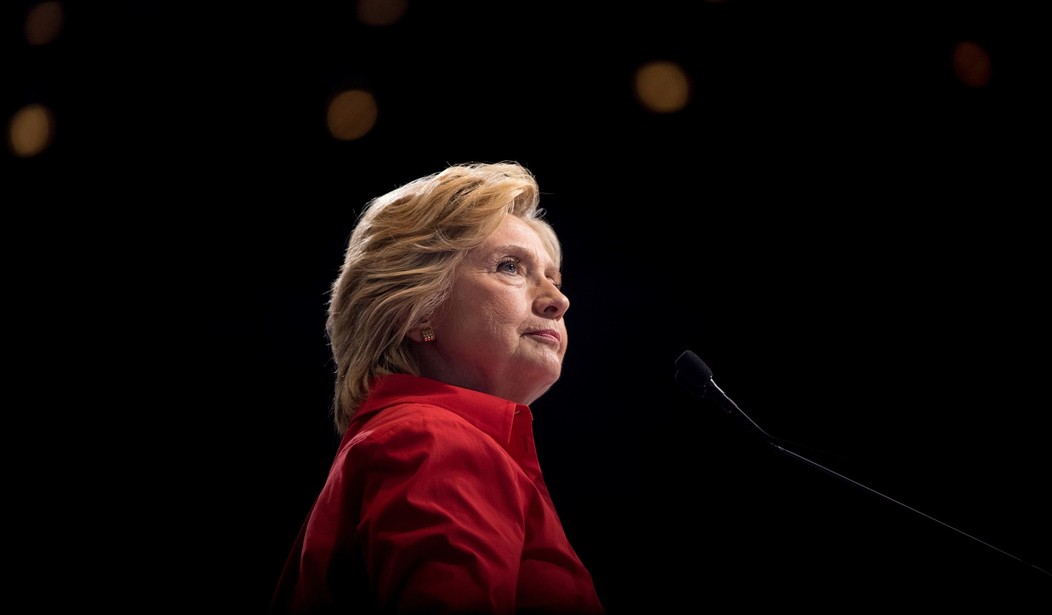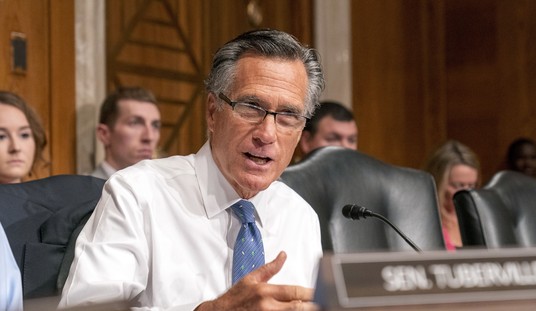A pro-Trump political action committee has filed a complaint with the FEC alleging the Hillary Clinton campaign laundered $84 million in contributions from big-name donors, such as Facebook COO Sheryl Sandberg, filmmaker Steven Spielberg, and designer Calvin Klein.
The complaint outlines a money laundering scheme that violated multiple campaign finance laws, specifically laws related to limits on contributions by independent donors. As of this week, the complaint has escalated with a lawsuit urging the FEC to take action on the complaint which appears to have been largely ignored by the FEC since being filed in December of 2017.
Using both civil and criminal laws, the US government limits how much money an individual can contribute to a particular candidate or political action committee in order to combat corruption and to maintain fair elections. While the actual base limits on individuals will vary with each year, the principle behind limitations remains intact and has been continuously sustained by the Supreme Court. These limit computations require ridiculously absurd government mathematics because of the ways in which “party committee” contributions can increase an individual’s legal opportunities to contribute.
The shrewd individuals running the Hillary Victory Fund (HVF) figured out these campaign mathematics, and in 2016 appeared to legally solicit up to $356,100 from Clinton’s supporters at extravagant fundraisers, such as a dinner at George Clooney’s house and a concert featuring Elton John. Compare this to the $2,700 limit the government sets per individual contributor in a general election. How did they do it? HVF figured out how to maximize the permissible contribution numbers by calling themselves a “joint fundraising committee” comprised of Clinton’s campaign, the DNC, and 32 state party committees.
Recommended
Fast-forward and the HVF is accused of violating campaign contribution limits and engaging in corruption estimated at $84 million. But wasn’t their math correct? Yes, it was, but the clever mathematics may in fact have been a guise for what was really happening, according to the complaint. HVF would receive money from individuals under the guise of benefiting the Democratic party as a whole, but instead would quietly distribute the funds almost in entirety to benefit the Clinton campaign.
By transferring money back and forth between committees and eventually filtering it into the Clinton campaign, the HVF essentially laundered funds, says Dan Backer, the attorney who filed the complaint and lawsuit. This practice was deemed illegal in 2014 when Backer won a landmark campaign finance case in the Supreme Court. (As an aside, it is precisely the Supreme Court decision in Backer’s 2014 case McCutcheon v. FEC that paved the way for the large contribution opportunities that HVF capitalized upon.)
Ted Harvey, chairman of the Committee to Defend the President, described Clinton camp’s campaign practice as an “unprecedented scheme to circumvent federal campaign finance law.”
The violations in the complaint appear legitimate, as they are based entirely on information readily available in the public domain. According to Backer, the complaint is built on Federal Election Commission (FEC) reports filed by Democrats, memos authored by Clinton’s campaign manager, public statements from DNC chairwoman Donna Brazile and other Democrat state and national party officials.
In May 2016, Politico caught wind of this while analyzing FEC filings. Politico discovered the HVF would receive money from individuals under the guise of benefiting the Democratic party as a whole and instead would quietly distribute the funds mostly to the Clinton campaign. “The Democratic front-runner says she's raising big checks to help state committees, but they've gotten to keep only 1 percent of the $60 million raised,” Politico announced. According to Dan Backer, by transferring money back and forth between committees but eventually filtering them into the Clinton campaign, the HVF basically laundered donations. Politico noted that state party officials were made aware that Clinton's campaign would control the movement of the funds between participating committees. But it appears that no one did anything about it.
The Bernie Sanders campaign was livid when it discovered this practice. Sanders publicly criticized the HVF and the Clinton campaign, accusing Clinton's campaign of “looting funds.”
In her 2017 book “Hacks,” Brazile recounts how she saw the money being moved in attempt to elude US campaign laws. “Individuals who had maxed out their $2,700 contribution limit to the campaign could write an additional check for $353,400 to the HVF —that figure represented $10,000 to each of the 32 states’ parties who were part of the Fund agreement—$320,000—and $33,400 to the DNC,” reads a passage from the book. “The money would be deposited in the states first, and transferred to the DNC shortly after that. Money in the battleground states usually stayed in that state, but all the other states funneled that money directly to the DNC, which quickly transferred the money to [Clinton campaign headquarters in] Brooklyn.”
This alleged laundering practice has paved the way for the FEC complaint alleging that this practice provided Hillary Clinton with more campaign funds than she is allotted under US law. If the FEC finds the Clinton campaign in fact upended campaign finance laws, it will be the largest campaign finance scheme in American history.
HVF organizers may be facing a myriad of charges, if the FEC complaint is sustained. But what about the individual contributors?
There are over 1000 Democrat donors implicated, many with contributions totaling over $400,000. If the allegations are sustained, could contributing individuals, including the impressive list of celebrities like Steven Spielberg, Vera Wang, and Seth MacFarlane, be subject to criminal prosecution for their contributions?
Technically, the answer is yes — if the government can prove that they were purposefully violating the law. Under US law punishing contributions that exceed the permissible FEC limits, individuals can only be criminally liable for knowing and willful violations.
The effective laws are outlined in 52 U.S.C. § 30109 (previously 2 U.S.C. § 441a). The penalties provide for civil and criminal liability. The law provides criminal penalties of up to five years imprisonment for anyone who “knowingly and willfully” commits a violation which involves “the making, receiving, or reporting of any contribution, donation, or expenditure.” (Since the purpose of this analysis is to discuss criminal liability, we will bypass the civil fine issues.)
The DOJ has already obtained criminal convictions against various campaign contributors, successfully proving these elements. For example, consider campaign contributor F. Harvey Whittemore, prosecuted by the DOJ for making contributions in excess of the FEC limits. Following a two-week trial, a jury found Whittemore guilty of making illegal donations to Democrat Senator Harry Reid's reelection campaign in 2007. In 2014, the DOJ successfully prosecuted Dinesh D’Souza, a former policy adviser to President Reagan, for illegal campaign contributions to Republican Senate candidate Wendy Long.
Moreover, our government is large and resourceful. For example, the DOJ can charge 18 U.S. Code § 371, which criminalizes conspiracies to commit any offense against the US, in any manner or for any purpose. Yes, you read that right. Any conspiracy offense, in any manner or for any purpose. This catch-all has been used by the DOJ to prosecute FEC violations by groups in various cases, including those associated with the Justin Lamar Sternad campaign, a 2012 Democratic primary candidate for Florida's 26th congressional district. This charge is but a sample; there are many more charges that may apply.
Should people who contributed to HVF be legitimately concerned the DOJ will be coming after them?
The HVF promotional materials described the Fund broadly, as a way to “support Hillary Clinton and Democrats up and down the ticket.” They did not appear to disclose that almost all funds would be channeled directly into Clinton’s personal campaign, leaving those “Democrats up and down the ticket” in the cold. Unwitting contributors responding to these ads could not have known their funds would be funneled unlawfully to cause them to exceed their contribution limits - a defense to the willful and knowing elements of the law. Other defenses may exist as well.
But did some of them know? How could the Fund have grown to $84 million without any of the contributors knowing who was benefitting from their contributions – and without any specific solicitations to that effect? Did any of the individuals contribute knowingly and willfully to HVF in excess of the legal limits? These are just some of the questions that the DOJ could investigate.
When the FEC found the Obama campaign in violation of contributions in the aggregate amount of $1.36 million, the FEC finalized the matter via conciliation agreement and found no cause to investigate the individual contributors for criminal conduct. In fact, US law provides a defense to criminal culpability under these circumstances: “any defendant may evidence their lack of knowledge or intent to commit the alleged violation by introducing as evidence a conciliation agreement.” But Obama’s team was able to show clerical error and cure the excessive contributions.
The decision to prosecute individual contributors is discretionary and will depend on the magnitude of evidence against each individual contributor, evaluated on a case-by-case basis. We cannot yet predict whether the DOJ will find enough evidence to prosecute any HVF contributors.
Backer insinuates that Clinton’s contributors are more culpable than Obama contributors: “Does Calvin Klein truly care about the Alaska Democratic Party? Or was he trying to curry favor from Hillary Clinton? Which one seems more plausible?”
To date, I am unaware of any active criminal prosecution of Clinton campaign contributors under this scheme. That is not to say that a criminal investigation is not ongoing or that criminal charges will not be initiated at a later time.
*The information in this article is for general informational purposes only, and should not be construed as legal advice.*
























Join the conversation as a VIP Member